Not far from the famous Royal Observatory in Greenwich Park is a field that was once a large cemetery. Today, all that remains are a few modest mounds that mark where the burials took place, and it’s unlikely that most people who walk past them, or sit on them, have any idea what they are. This is perhaps not surprising, as this old burial ground is over 1,000 years old.

It was fortunate that I visited Greenwich Park during a period of dry weather, as it was easier to discern the different growth patterns in the grass that show where the burial mounds are located. The mounds have been disturbed and eroded over the years, so they do not rise very high – making them hard to spot. As each of them was originally surrounded by a ditch, the grass grows slightly differently in the ditches and on the mounds themselves. For example, the thin line of darker, taller grass pictured below helps us to see the round shape of the burial mound within.
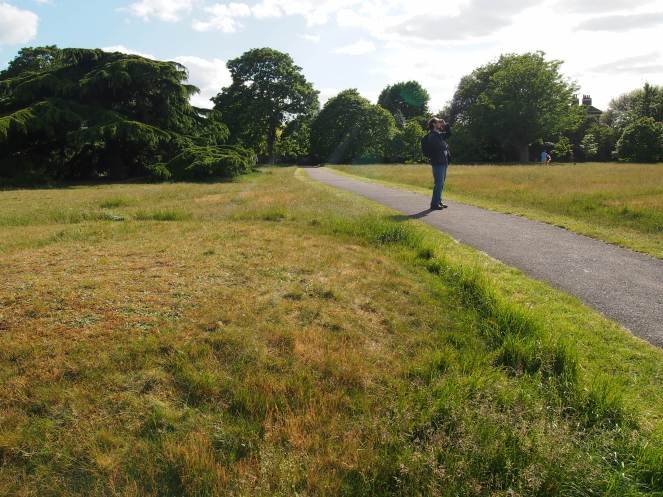
These burial mounds are thought to have been used for pagan burials in a period dating between the sixth and eighth centuries AD. Although Christianity became established in south east England in this period, Christian burials tended to be associated with churches, churchyards and the notion of being buried in consecrated ground. No evidence has been found for such a setup in the vicinity of the burial mounds. From the tanatlisingly thin accounts of historic archaeological investigations on the Greenwich mounds, there is some evidence of grave goods – something else not associated with Christian burials.
Burial mounds, also known as barrows or tumuli, have been used since the Neolithic period, and evidence for them has been found in many different parts of the world. Burial mounds come in all sorts of shapes and sizes, from modest barrows covering perhaps a single burial, to huge monumental earthworks that were designed to dominate the landscape. Probably the most extreme and spectacular burial mound of them all is the huge mound over the tomb of the first Chinese Emperor, Qin Shi Huang, near X’ian in China. The most famous burial mounds in England are those raised over the ship burials at Sutton Hoo in Suffolk in the early 7th Century, which were excavated in 1939 and famously yielded an array of treasures.
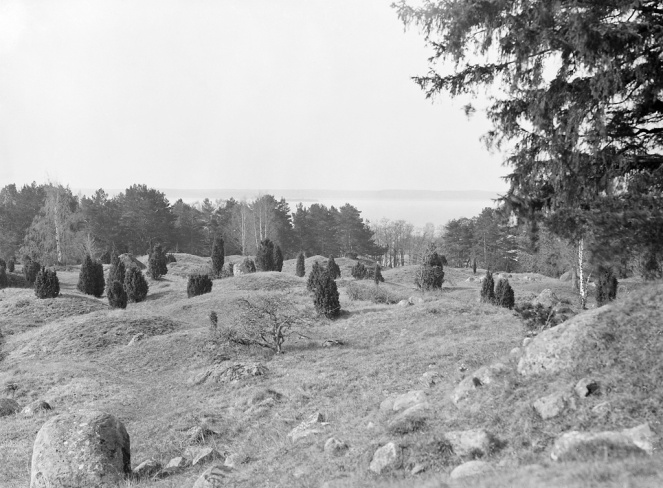
It’s possible that the burial mounds at Greenwich are older than the Anglo-Saxon burials contained within them. There are theories that the mounds may be from the Bronze Age, a period that lasted from roughly 3000BC to 600BC in Europe. People were certainly living in the Greenwich area at this time – Bronze Age artefacts have been found in the Thames at Greenwich, and other Bronze Age burial mounds have been recorded in nearby Woolwich and Shooters Hill. Evidence for the reuse of Bronze Age burial mounds in later periods has been found on a number of sites around Britain. One theory is that ancient burial mounds were reused by the Anglo-Saxons to create a sense of continuity with the area’s ancient inhabitants – perhaps a way of legitimising a claim to an area. In Death and Memory in Early Medieval Britain, Howard Williams comments that “the choice to ‘reuse’ the site is likely to have been a deliberate appropriation of an unknown past, imbuing the monument with new meanings that served to create connections to an invented ancestral past, and perhaps also to stake claims for the future.” (p.32)
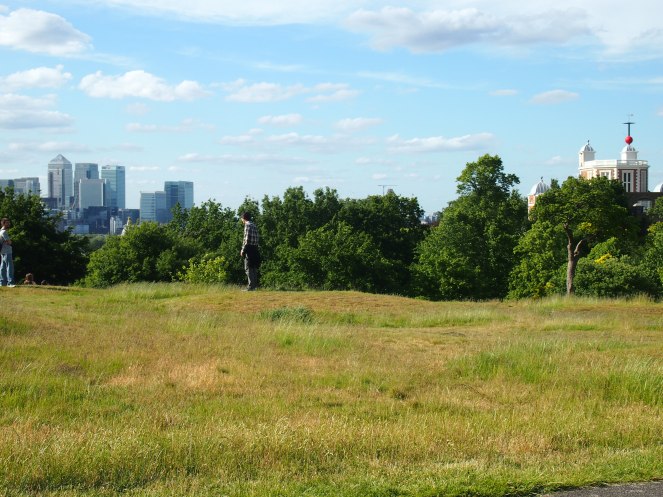
So little is known about the people who lived and died in the Greenwich area at this time. Greenwich was later occupied by Danish troops in the early 11th Century, but less is known about the time that locals were burying their dead in what would become Greenwich Park. The name “Greenwich” – meaning “green place” is thought to have Saxon origins. The riverside location of Greenwich made it ideal for fishing and it may have been this that attracted people to settle there. The river would also have provided trade links, and Greenwich was also close to the Roman road that led into London (remains of a Roman villa have also been found in Greenwich Park).
In the early Anglo-Saxon period, London was no thriving metropolis. The old Roman city had been in decline for a long time before the Roman legions abandoned Brittannia in AD 410, and after the Roman withdrawal, Londinium gradually fell into ruin. Artefacts found in the Billingsgate Bath House showed that people were passing through the city during the post-Roman period, but when London became a centre for markets and trade again in the early 7th Century, it was to the west of the Roman city, in the area we now know as Covent Garden. This trading settlement, known as Lundenwic (literally, “London trading place”), was a part of the Kingdom of Essex.
It is quite possible that the people who buried their dead in the mounds at Greenwich Park may have had links with Lundenwic, perhaps through trade or family connections.
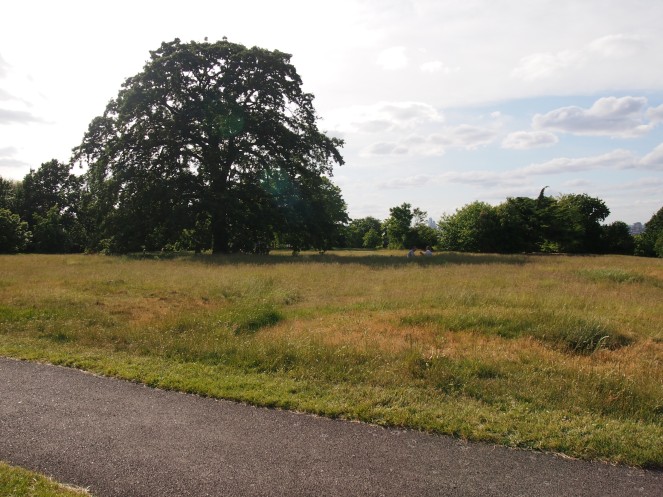
The first records of excavations taking place on the burial mounds are from the 18th Century. Reverend James Douglas, a clergyman and antiquarian, received permission to excavate some of these mounds in 1784, and he made a number of discoveries. Iron nails and decayed wood indicated the presence of coffins, although no bones were found. However, pieces of braided human hair were found, along with scraps of cloth, beads, spear heads and blades, and coins dating from the late fifth to early sixth centuries. The absence of any weapons led Douglas to conclude that the burials were of high-status women. Douglas published his findings, along with accounts of other barrows that he had excavated, in his 1793 book Nenia Britannica, or a Sepulchral History of Great Britain, from the earliest period to its general conversion to Christianity.
Edward Hasted, writing in 1797, alleged that digging had taken place at the barrows about 70 years before Rev. Douglas’ dig, and that “several items of value” were found at this time. What these items were, we will never know. Grave robbery and the pilfering of archaeological sites have, sadly, been a problem ever since humans started burying treasures with the bodies of their dead.
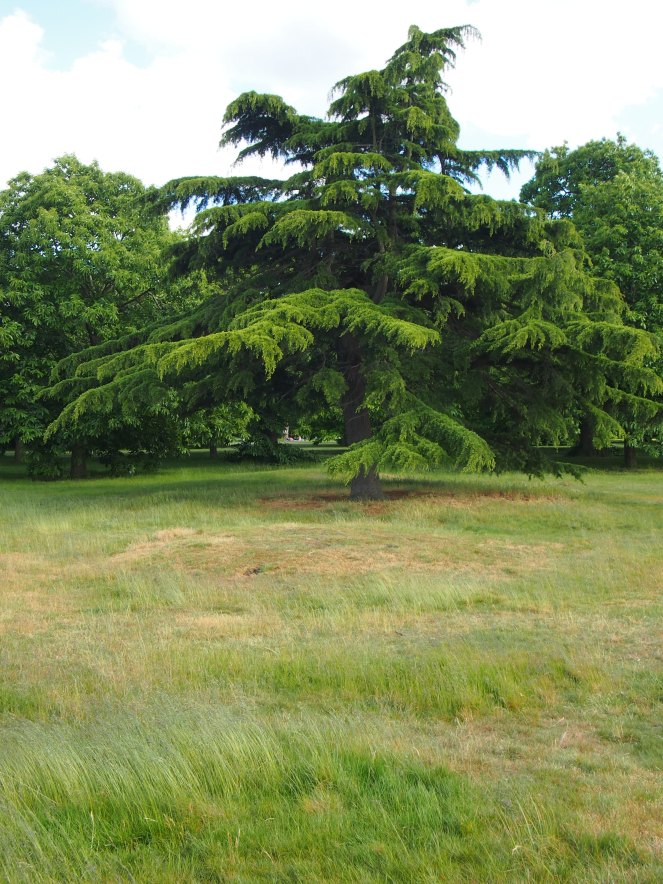
A number of the burial mounds were destroyed in the 19th Century, when a scheme was begun to build a reservoir for the Kent Water Works Company in 1844. The destruction of some of the burial mounds, as well as the threat to the park, led to a considerable public outcry from locals. A sustained campaign was waged to prevent the construction of the reservoir. This extract from the West Kent Guardian on 8th June 1844 describes the plight of the burial mounds:
Here also is the further encroachment, on the very point of being perpetrated, of occupying a considerable portion of one of the most favourite parts of the Park is an uncouth reservoir, despoiling one of the most convenient and picturesque entrance to the Park; and with this attendant gross Vandalism, that the site of the reservoir is staked off in the midst of the remarkable and interesting group of Saxon barrows, happily recorded by Douglas in his Nenia Brittannica, but the greater number of which are now doomed to destruction, after having endured for a thousand years, a monument of the customs and rites of our Saxon ancestors.
Construction of the reservoir was eventually halted (but not before more mounds were damaged by workmen). The “uncouth reservoir” was eventually constructed on a different site outside of the park, which the West Kent Guardian described on 29th June 1844 as “an unobjectionable spot in a gravel pit, on Blackheath, outside the southern wall of the Park.”
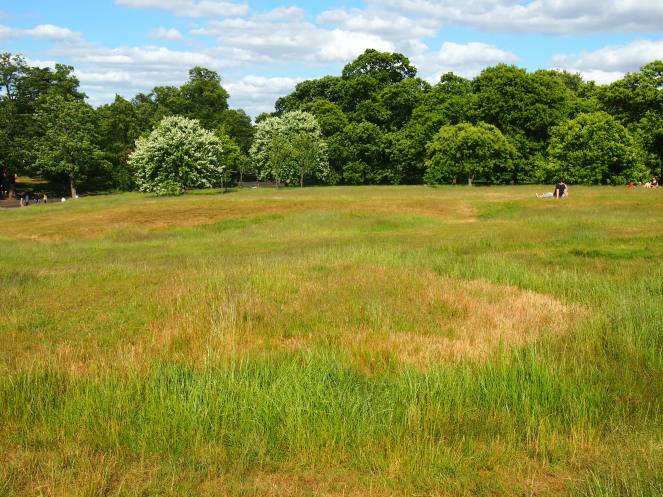
The ancient cemetery was saved, and the burial mounds can still be seen today. But it’s no dramatic, imposing place like so many of the burial grounds we’ve explored on Flickering Lamps. There are no plaques or markers to inform people of its previous use as a cemetery. We’ll never know the names of any of the people laid to rest in the mounds. But this was once a place of mourning, ceremony and remembering, the site of a community making its mark on a landscape, and the subtle mounds are a reminder of the traditions of this area’s long-gone people. The landscape hasn’t quite forgotten its Anglo-Saxon and Bronze Age inhabitants yet.
References and further reading
Edward Hasted, Parishes: Greenwich, in The History and Topographical Survey of the County of Kent: Volume 1. Originally published by W Bristow, Canterbury, 1797 http://www.british-history.ac.uk/survey-kent/vol1/pp372-420
Howard Williams, Death and Memory in Early Medieval Britain, Cambridge University Press, 2006
Anglo-Saxon burial mounds, The Greenwich Phantom, 2nd September 2008 http://www.thegreenwichphantom.co.uk/2008/09/anglo-saxon-burial-mounds/
List entry for Anglo-Saxon cemetery in Greenwich Park, Historic England http://list.historicengland.org.uk/resultsingle.aspx?uid=1021440
Death and Landscapes: why does location matter?, Bones Don’t Lie, 14th May 2015 https://bonesdontlie.wordpress.com/2015/05/14/death-and-landscapes-why-does-location-matter/


Fascinating post have walked through here and never realised it was a graveyard, thank you for this enlightening post!
LikeLike
Thank you!
LikeLike
How strange! I ran through that part of Greenwich Park for the first time in a while a few days ago and was thinking about the burial mounds – I read the piece you quote in the Phantom while I was laid up (although I had wondered whether they were burial mounds for a while) but it didn’t really shed much light on them. Thank you for making sense of the landscape!
LikeLiked by 1 person
Thanks! It’s a fascinating site – such a shame that so much of what was excavated at the end of the 18th Century has been lost.
LikeLike
It may not have the imposing (and sometimes, as you have shown us, wonderfully daft) statuary of your usual post subjects, but there’s something poignant about those green-rimmed hints of the distant past.
LikeLike
Yes – at one point those mounds will have been revered and were probably quite prominent landmarks; now, most people don’t even notice them.
LikeLike
What a fascinating place, Caroline, and in such an unexpected location. It is good that it hasn’t been lost. Amazing to read of the finds – braided hair! And high status women – so much you’d like to know! Regarding ‘Greenwich’, I remember that Alfred Watkins in ‘The Old Straight Track’ claimed that ‘wich’ and ‘wick’ place names derived from the trade of salt, and the paths that the traders used to follow.
LikeLike
It’s such a shame that so many of the artefacts from the site have been lost – the accounts of the things they found are quite tantalising and whilst researching this post I’ve wondered a lot about the people who were buried there.
There are a few places in Cheshire with names that end in “wich” that also have the salt connection.
LikeLiked by 1 person
And of course Droitwich Spa near where I live…not far from a Roman road called the Salt Way and if you tasted our tap water you would know why!!!
LikeLiked by 1 person
Goodness, I regularly walk in the Park and didn’t know any of this. Thank you; I will have another look.
LikeLike
Thank you! It’s an easy site to miss – the mounds are definitely easier to spot during dry weather.
LikeLike
Burials from the Anglo Saxon period were also found on the site of the Tudor tilt yard – very roughly in front of the Queens House adjacent to Park Row. Possibly Christian whereas those in the park are pagan. A small number of AS bones found on corner of Maze Hill and Park Vista but may have been moved from another Greenwich site eg Tiltyard. All very intriguing.
LikeLike
Just found this wonderful site. My family and I will be visiting Greenwich for the first time next month. Where exactly are these located? I would like to see them while walking through the park.
LikeLike
Hi, the burial mounds are located in the south-west section of the park, in an area crisscrossed with footpaths, as indicated on this map.
A good way of locating them on Google Maps is to switch to Satellite View, as when you zoom in the round structures are quite clearly visible on the satellite image.
I hope you enjoy your visit to Greenwich!
LikeLike
You make history come alive. So different from those distant school days. Thank you.
LikeLike